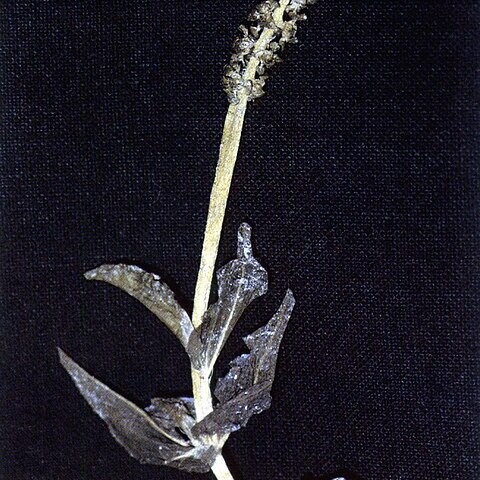Rhizome present. Cauline stems terete, without spots, to 100 cm; nodal glands absent. Turions absent. Leaves submersed, ± spirally arranged, sessile, lax; stipules persistent, conspicuous, convolute, free from blade, white, not ligulate, 0.12--0.17 cm, fibrous, disintegrating to persistent fibers, even on proximal portion of stem, shredding at apex, apex obtuse; blade olive green, ovate-lanceolate to narrowly lanceolate, not arcuate, 1.6--13 cm ´ 5--28 mm, base rounded, without basal lobes, clasping, margins entire to crispate, apex not hoodlike, not splitting when pressed, acute to obtuse, lacunae absent; veins 3--35. Inflorescences emersed, unbranched; peduncles not dimorphic, terminal or axillary, erect to rarely recurved, clavate, 1.5--14.8 cm; spikes not dimorphic, cylindric, 13--37 mm. Fruits sessile, greenish brown, obovoid, turgid to concave, not or rarely abaxially keeled, not laterally keeled, 2.2--4.2 ´ 1.7--2.9 mm; beak erect, 0.4--0.7 mm; sides without basal tubercles; embryo with 1 full spiral. 2n = 52.
More
Much like no. 29 [Potamogeton perfoliatus L.]; lvs narrower, lance-ovate to nearly linear, (3–)5–12 cm × 5–20 mm, acute, sessile and cordate-clasping, (3–)13–21(–35)-veined, 3(5) veins stronger; stipules 1–2 cm, soon disintegrating into ± persistent white fibers; peduncles 1.5–25 cm; spikes 1.5–3 cm; frs 2.2–4.2 mm; 2n=52. Ponds and streams; Que. to Alas., s. to Pa., Ind., Io., Colo., and Calif.


